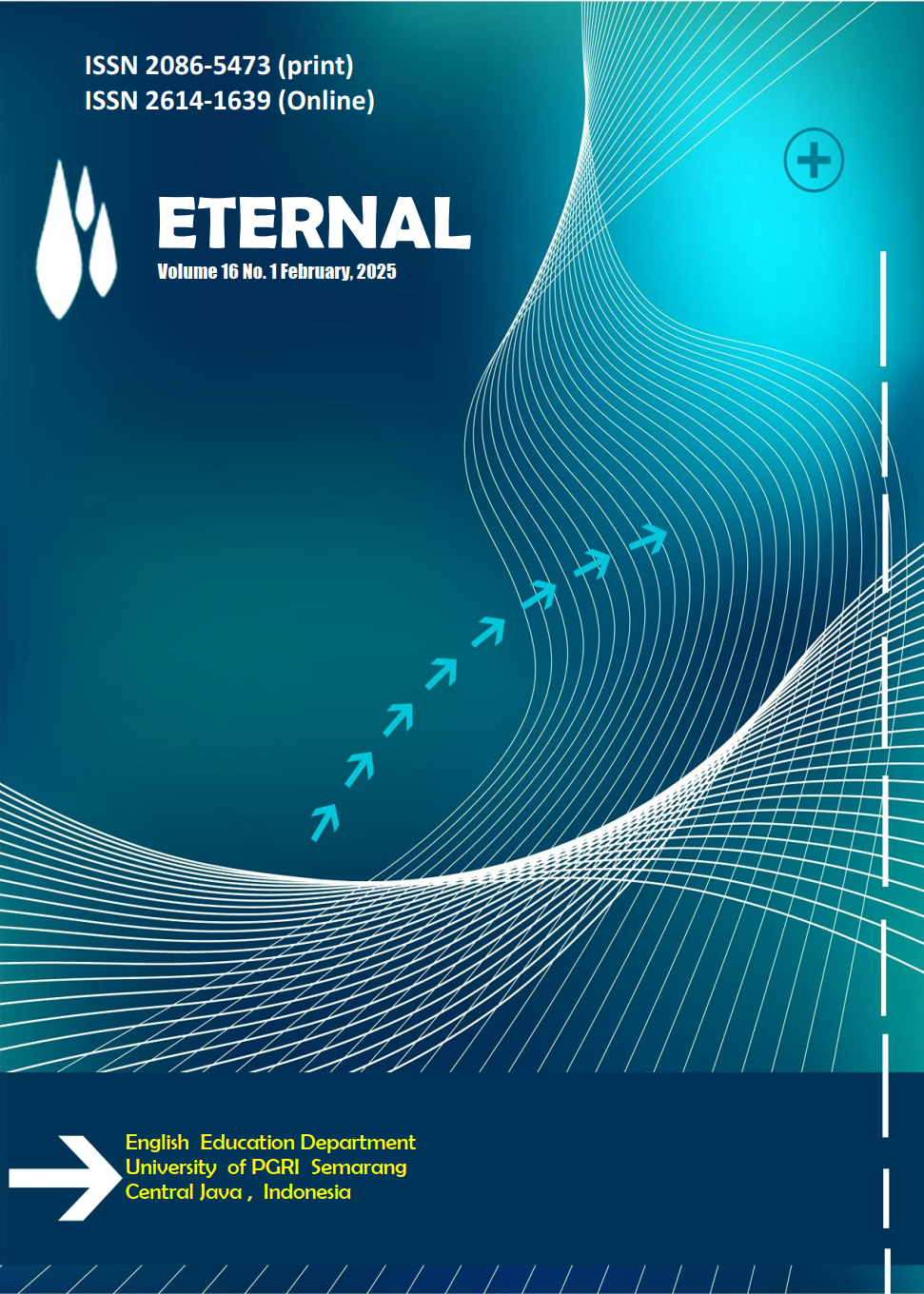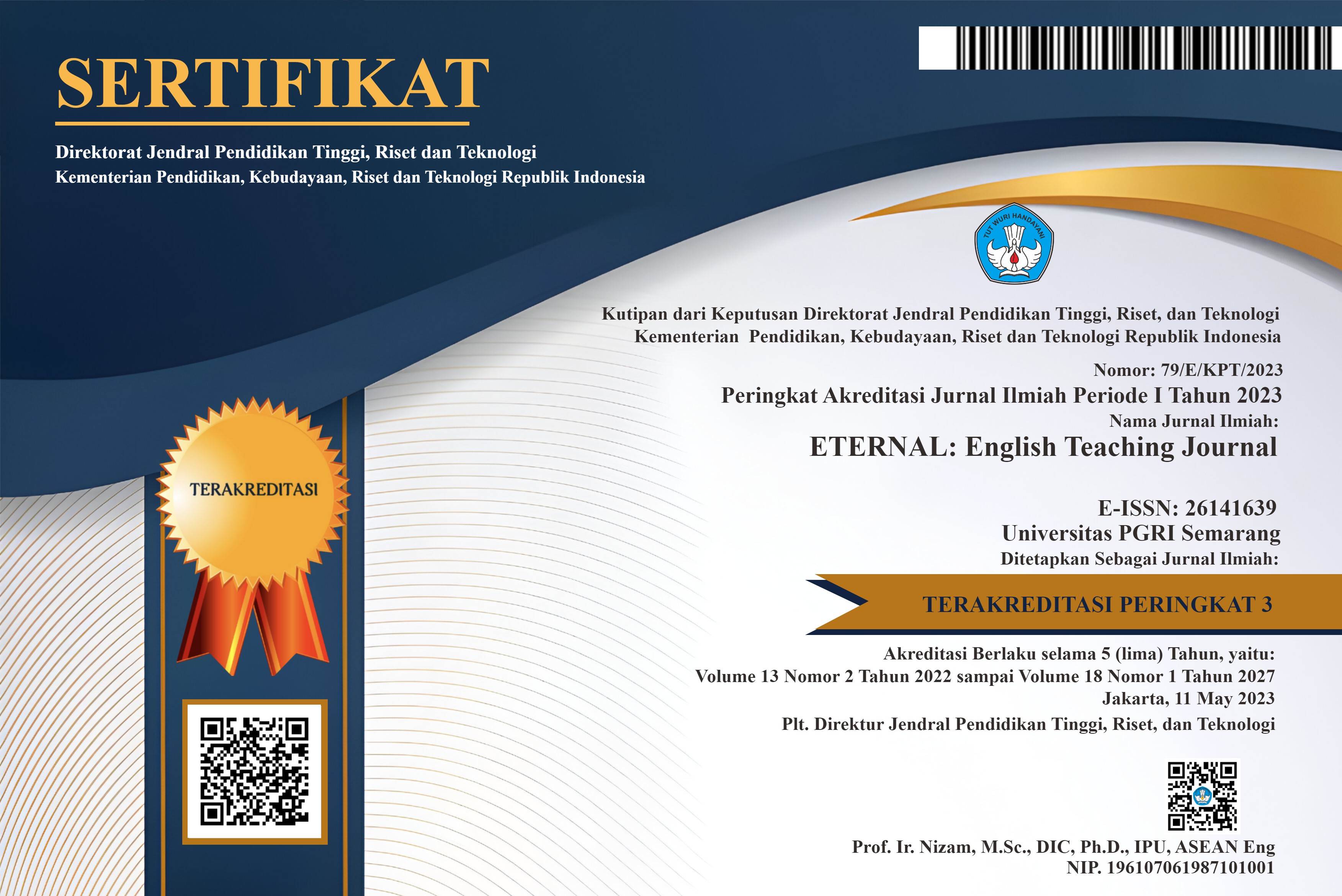Reading Comprehension through Multimodal Literacy Approach for English Education
DOI:
https://doi.org/10.26877/eternal.v16i2.1910Keywords:
Multimodal literacy, Reading comprehension, Multimedia learning, Differentiated instruction, Technology integrationAbstract
In the digital era, reading comprehension of multimodal texts that integrate written language with images, videos, and interactive elements has become crucial yet challenging for many students. This mixed-methods study investigated the effectiveness of a multimodal instructional approach in enhancing reading comprehension among 120 Indonesian high school students. The quantitative component employed a quasi-experimental design with pre/post reading comprehension tests, while the qualitative component utilized observations and interviews. The results revealed that the experimental group receiving multimodal instruction achieved significantly higher reading comprehension scores compared to the control group receiving traditional text-based instruction (F(1, 117) = 12.68, p < .001, ηp2 = .098). The multimodal approach was particularly beneficial for students with lower initial reading proficiency levels. Qualitative data indicated increased engagement, motivation, comprehension facilitation, accommodation of diverse learning styles, and the need for technology integration support and instructional scaffolding. The findings align with multimedia learning theory and differentiated instruction principles, providing empirical evidence supporting the integration of multimodal elements to create engaging, accessible, and effective reading experiences. Implications for teacher professional development, curriculum design, and future research directions are discussed. Overall, this study contributes to the growing literature on multimodal literacy pedagogy and offers practical insights for enhancing reading instruction in the 21st century multimedia landscape.
References
Afflerbach, P., Pearson, P. D., & Paris, S. G. (2008). Skills and strategies: Their differences, their relationships, and why they matter. In S. E. Israel & G. G. Duffy (Eds.), Handbook of research on reading comprehension (pp. 368–389). Routledge.
Al-Jarrah, H., & Ismail, N. (2018). Reading comprehension difficulties among EFL learners in higher learning institutions. International Journal of English Linguistics, 8(3), 25–35.
Alyousef, H. S. (2005). Teaching reading comprehension to ESL/EFL learners. The Reading Matrix, 5(2), 143–154.
Brown, H. D., & Abeywickrama, P. (2010). Language assessment: Principles and classroom practices (2nd ed.). Pearson Education.
Cahyaningati, D. T., & Lestari, L. A. (2018). The use of multimodal text in enhancing reading skills. Journal of Language and Literature, 9(2), 147–159.
Coiro, J., Knobel, M., Lankshear, C., & Leu, D. J. (Eds.). (2019). Handbook of research on new literacies. Routledge.
Heriyawati, D. F., Saukah, A., & Widiati, U. (2018). The role of metacognitive strategies in developing EFL reading comprehension. Indonesian Journal of Applied Linguistics, 7(2), 229–238.
Hughes, A. (2003). Testing for language teachers (2nd ed.). Cambridge University Press.
Kasımi, E. (2012). Reading in a foreign language: What teachers should know. Journal of Language Teaching and Research, 3(4), 869–874.
Kitson, L. (2011). Reading comprehension strategies in secondary school textbooks. Australian Journal of Language and Literacy, 34(1), 30–45.
Kress, G. (2020). Multimodality: A social semiotic approach to contemporary communication (2nd ed.).
Namaziandost, E., Fadhly, M. H. A., & Solihat, E. N. (2019). The role of emotional intelligence in improving EFL learners’ reading comprehension. Asian EFL Journal, 21(2), 183–209.
Nugroho, A., Ikhsan, J., & Hartono, R. (2020). PISA 2018 results and educational implications in Indonesia. Journal of Education and Learning, 14(2), 89–100.
Nurjanah, N. (2018). Vocabulary knowledge and reading comprehension: A case study of Indonesian EFL students. Journal of English Education, 6(2), 128–137.
Organisation for Economic Co-operation and Development. (2019). PISA 2018 results (Volume I): What students know and can do. OECD Publishing.
Pearson, P. D., & Cervetti, G. N. (2013). The roots of reading comprehension instruction. In D. E. Alvermann, N. J. Unrau, & R. B. Ruddell (Eds.), Theoretical models and processes of literacy (6th ed., pp. 236–260). International Reading Association.
Qarqez, M., & Rashid, R. A. (2017). Reading comprehension difficulties among EFL learners: The case of first and second-year students at Yarmouk University in Jordan. Arab World English Journal, 8(3), 421–431.
Serafini, F. (2014). Reading the visual: An introduction to teaching multimodal literacy. Teachers College Press.
Suherdi, D. (2015). Multimodal literacy: Theoretical foundations and practical applications. Indonesia University of Education Press.
Walsh, M. (2015). Multimodal literacy: Researching classroom practice. New Literacies and Digital Epistemologies, 69, 33–54.
Widodo, H. P. (2018). The construction of English language teaching and learning in Eastern Indonesia: A case study. Asian EFL Journal, 20(4), 35–57.
Yu, V. (2015). Teaching and learning in the digital age: How digital tools impact reading comprehension. Journal of Language and Literacy Education, 11(2), 94–109.







